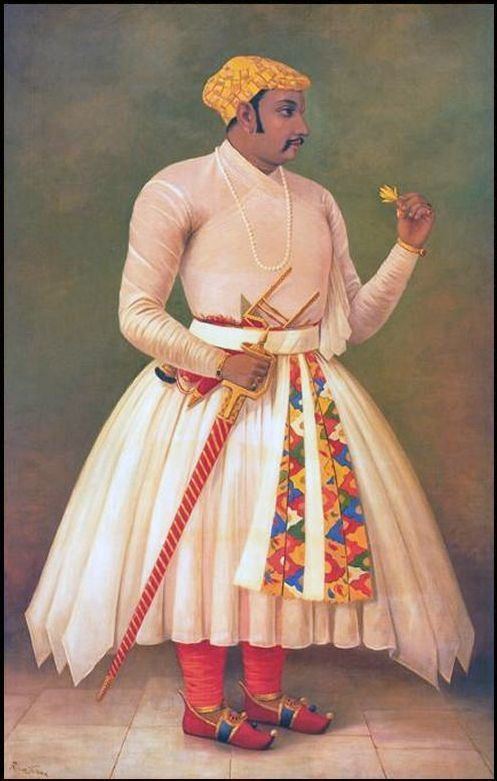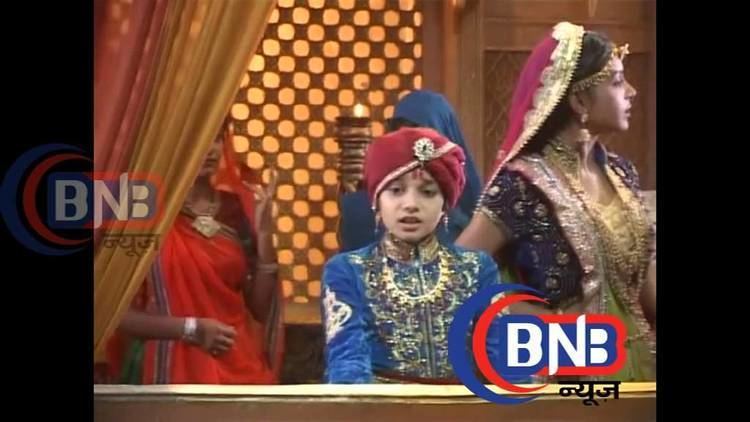Name Amar Singh I | ||
 | ||
Reign 23 January 1597 - 26 January 1620 (7008726084000000000♠23 years, 3 days) Spouse Aarti Bai Soharia Chauhan(1/2 others) Issue Karan Singh IISurajmal(2/7 others) Similar People Maharana Pratap, Udai Singh II, Maharani Jaiwanta Bai | ||
RANA AMAR SINGH History Son Of Maharana Pratap...!
Maharana Amar Singh I, the Maharana of Mewar (16 March 1559 – 26 January 1620), was the eldest son and successor of Maharana Pratap of Mewar. He was the 13th Rana of Mewar dynasty of Sisodia Rajputs and ruler of Mewar from 19 January 1597 till his death on 26 January 1620. His capital was Udaipur
Contents
- RANA AMAR SINGH History Son Of Maharana Pratap
- Birth
- Prince and Commander
- Coronation
- Battles
- Peace treaty
- Qualities
- Death
- References

Birth
Amar Singh was the eldest son of Maharana Pratap, born to his first wife, Maharani Ajabde Panwar, who was the daughter of Rao Mamrakh Panwar. He was born in Chittor on 16 March 1559, the same year, when foundation of Udaipur was laid by his grandfather, Udai Singh II.
However, by the time he grew up, Chittor was lost to Akbar in 1567 and his grandfather, Udai Singh II had shifted capital of Mewar to Udaipur.
Prince and Commander
After his Coronation, Maharana Pratap waged a war against Mughals and did not succumb to Akbar. He fought several wars with them to re-conquer Chittor and other territories lost to Mughals. Amar Singh, being eldest son, became the heir-apparent and prince or Rajkunwar.
Amar Singh was trained in military warfare and weapons since childhood. Upon growing up, he proved to be a great warrior and general and fought many wars with Maharana Pratap against Akbar.
In an incident, the womenfolk of Abdul Rahim Khan-I-Khana, along with a Mughal officer, fell into the hands of Amar Singh. He at once brought them as prisoners to Maharana Pratap. At this point of time, Khan-I-Khana was actually on the march against Pratap, and was camping at Sherpur in order to make preparations for an assault against Pratap. Nonwithstanding all this, Pratap rebuked Amar Singh for having arrested ladies of the enemy camp and commanded Amar Singh to arrange for the safe conveyance of the Mughal ladies to their camp.
Coronation
Maharana Pratap died at Chavand succumbing to the injuries sustained in hunting. While on death-bed he made Amar Singh his successor in front of his chiefs and made them swear to maintain their fight against the Mughals and to re-conquer Chittor.
Amar Singh thus succeeded Maharana Pratap upon his death on 19 January 1597 and was the ruler of Mewar till his death on 26 January 1620, as the 13th regent of Mewar dynasty.
Battles
Amar Singh fought many wars with Jahangir during his lifetime. The first expedition Jahangir sent after his coronation was against Amar Singh.
He sent Prince Parviz and Asaf Khan, who led an army of 80,000 horse which fought a battle against Rana Amar Singh at Dewar in year 1606, which was fought in a valley of Aravalli about 40 km north-east of Kumbhalgarh. Amar Singh showed great bravery in Battle of Dewar and in the battle Amar Singh killed the Mughal commander in charge, Sultan .Amarsingh thrust his spear with such force that the weapon struck the ground after piercing the strong coat of mail and the horse of Sultan Khan Amar Singh was able to defend his territories in the battle.
Jahangir sent another army against Amar Singh in 1608 under Mahabat Khan in which though Mughals won but they could not make any decisive change to ground situation.
Later an expedition was again sent under leadership of Prince Shah Jahan, which caused much damage to life and property of Mewar. Many temples were destroyed and several villages put on fire and ladies and children were captured and tortured to make Amar Singh accept surrender.
Peace treaty
Ultimately, after Mewar was devastated financially and in manpower due to several battles against Mughals, Amar Singh thought it was prudent diplomatic move to start negotiations with them and finally, entered into a treaty with Shah Jahan (who negotiated on behalf of Jahangir) in 1615.
In the treaty, it was agreed that Ruler of Mewar, will not be bound to present himself in person at Mughal court, instead, a son or brother of the Rana would wait upon the mughal emperor and serve him. Thus, Prince Bhim (the younger brother of Amar Singh) served Shah Jahan in the deccan. It was also agreed that the Ranas of Mewar would not enter matrimonial relations with the mughals. Further, it was agreed that Mewar would have to keep a contingent of 1500 horsemen in the Mughal service. Finally, it was agreed that the fort of Chittor would never be repaired. The reason for this last condition was that the Chittor Fort was a very powerful bastion and the mughals were wary of it being used in any future rebellion.
Later, when Amar Singh went to meet Jahangir at Ajmer, he was given a warm welcome by Mughal Emperor and the territories around Chittor along with the Chittorgarh Fort were given back to Mewar in 1616 by Jahangir, as goodwill gesture. However, the Chittorgarh fort was never inhabited fully and Udaipur remained the capital of Mewar State.
Qualities
Amar Singh was loved by his pupils and chiefs for the qualities like bravery, leadership, valor, justice and kindness and it is believed that during a war with Mughal's he was believed to have shown great valor which gave him the title 'Chakraveer'.It was during Amar Singh I’s reign that the height of the Pichola lake was raised for dams and ghats by the lakeside for public convenience. He constructed the dome of Bhatiyani Chowk, which is now in the Delwada Ki Haveli. He also constructed the Badi Pol, the Annapurna temple near the Badipol, Amar Mahal and the Bhandar Chowk within the City Palace.The Amar Saar was a text written during his rule.
Death
Amar Singh died on 26 January 1620 at Udaipur and was succeeded by his eldest son Karan Singh II.
